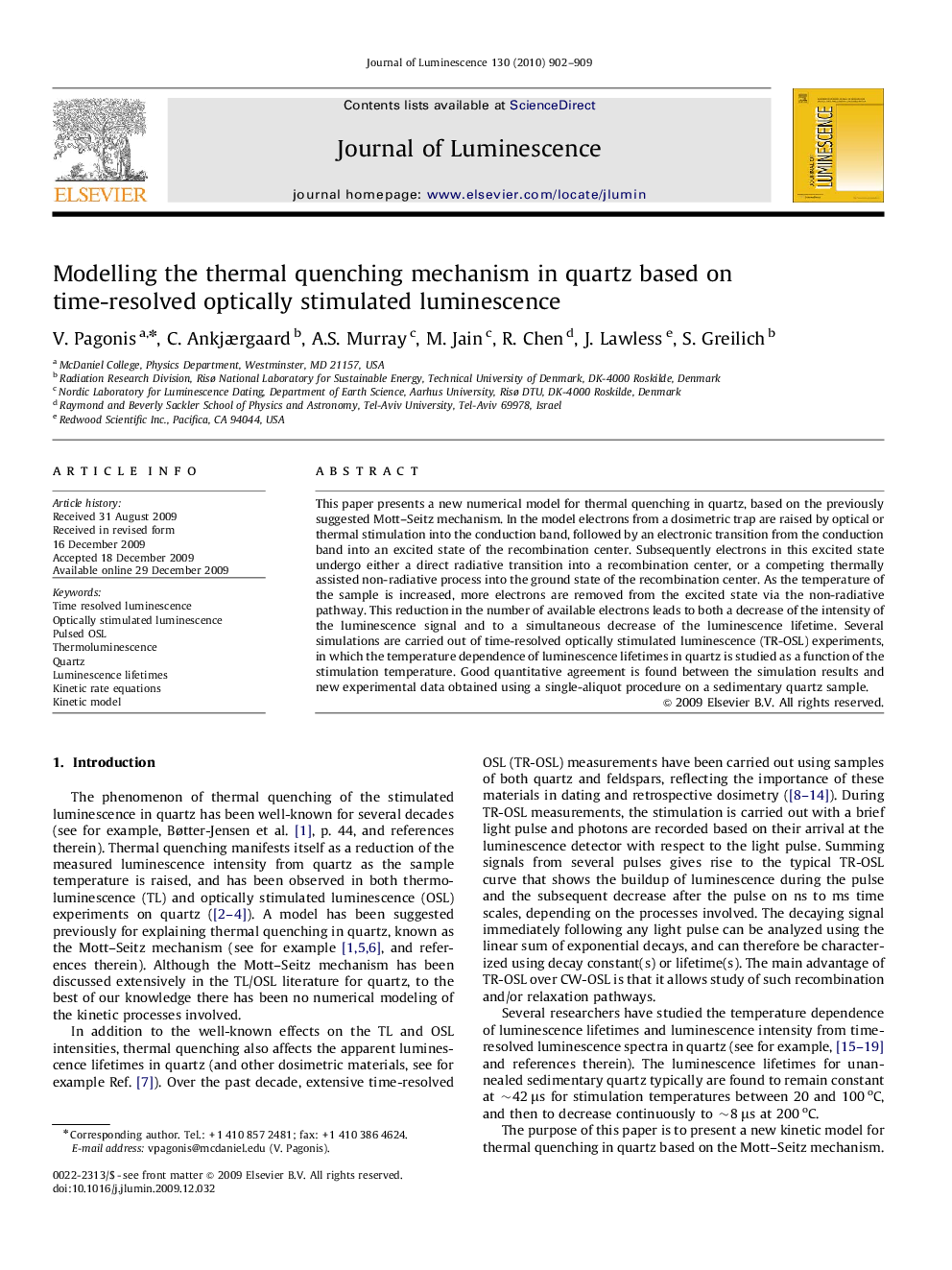| Article ID | Journal | Published Year | Pages | File Type |
|---|---|---|---|---|
| 5402589 | Journal of Luminescence | 2010 | 8 Pages |
Abstract
This paper presents a new numerical model for thermal quenching in quartz, based on the previously suggested Mott-Seitz mechanism. In the model electrons from a dosimetric trap are raised by optical or thermal stimulation into the conduction band, followed by an electronic transition from the conduction band into an excited state of the recombination center. Subsequently electrons in this excited state undergo either a direct radiative transition into a recombination center, or a competing thermally assisted non-radiative process into the ground state of the recombination center. As the temperature of the sample is increased, more electrons are removed from the excited state via the non-radiative pathway. This reduction in the number of available electrons leads to both a decrease of the intensity of the luminescence signal and to a simultaneous decrease of the luminescence lifetime. Several simulations are carried out of time-resolved optically stimulated luminescence (TR-OSL) experiments, in which the temperature dependence of luminescence lifetimes in quartz is studied as a function of the stimulation temperature. Good quantitative agreement is found between the simulation results and new experimental data obtained using a single-aliquot procedure on a sedimentary quartz sample.
Keywords
Related Topics
Physical Sciences and Engineering
Chemistry
Physical and Theoretical Chemistry
Authors
V. Pagonis, C. Ankjærgaard, A.S. Murray, M. Jain, R. Chen, J. Lawless, S. Greilich,
